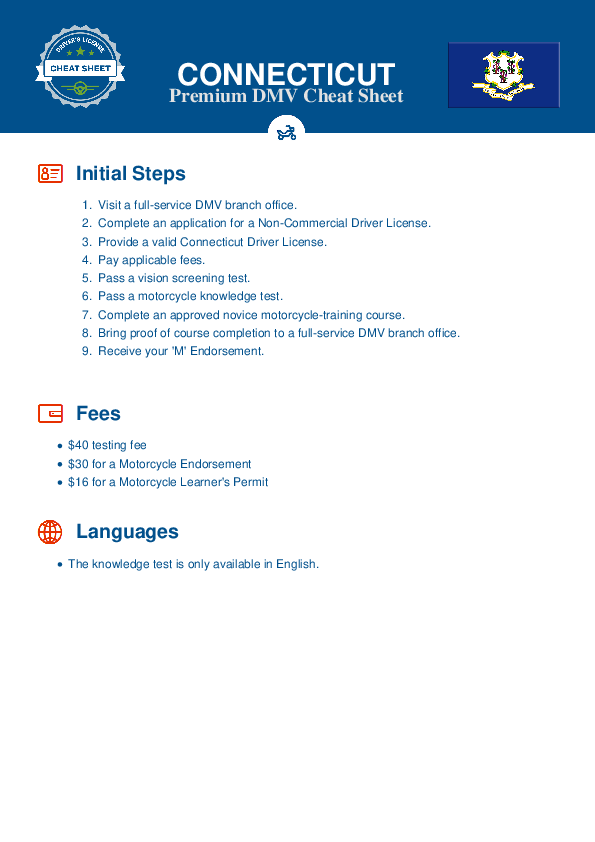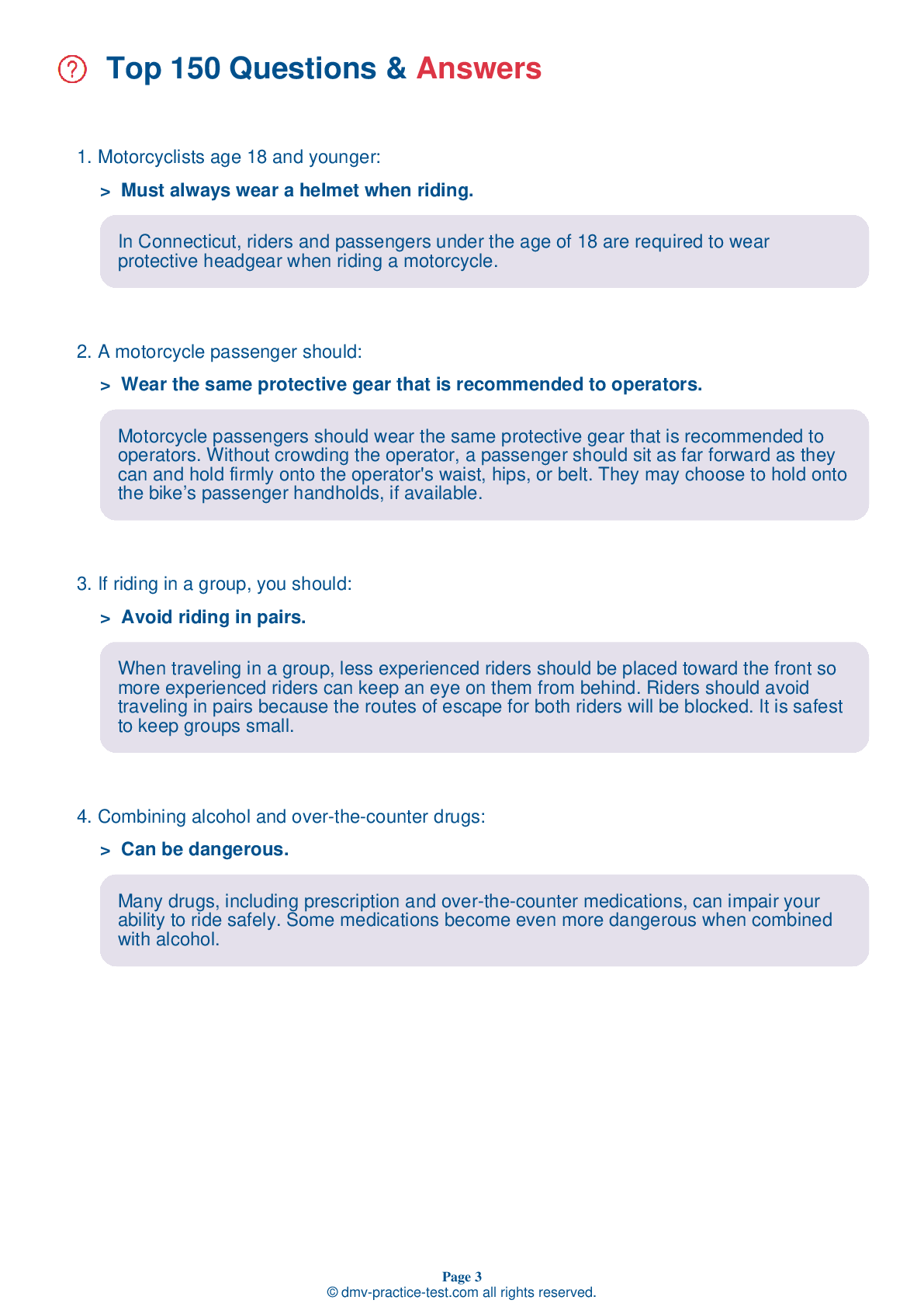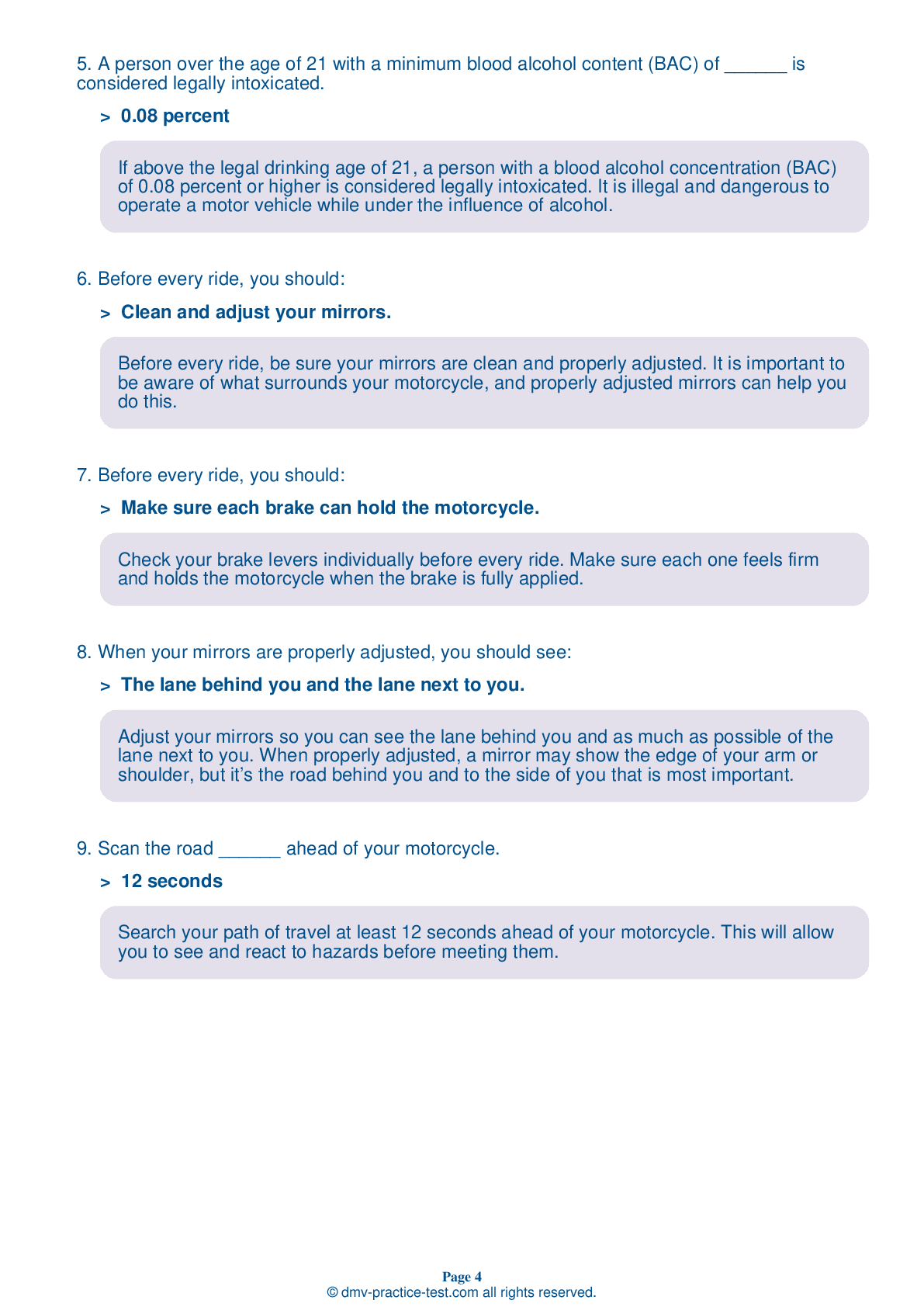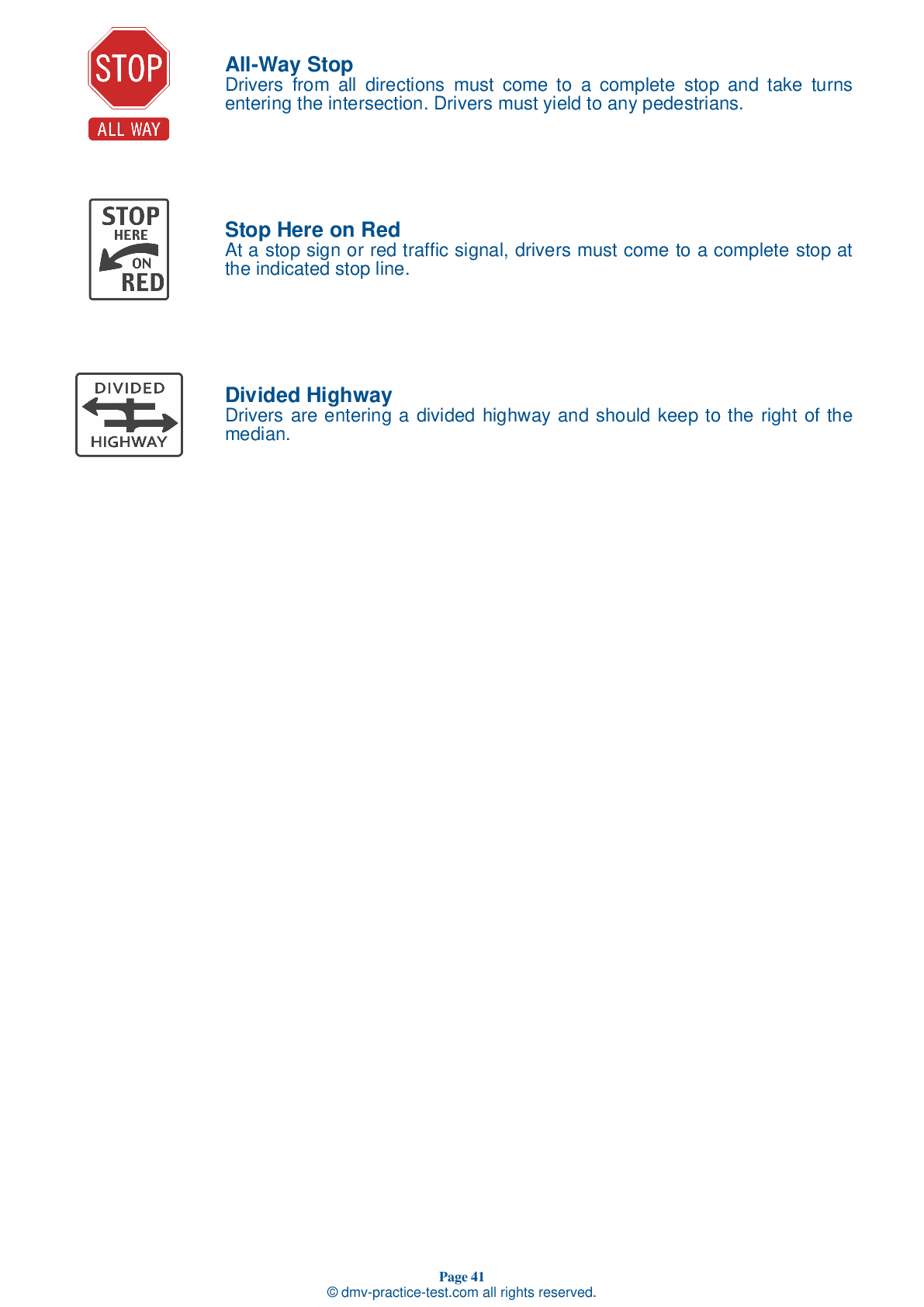Motorcycle Test | License CT 2025 | FREE Online Practice! #12
Take this FREE motorcycle test (license in CT 2025) to check your knowledge of the road rules. To improve your results, download a motorcycle handbook online, study theory, and practice for free on our website. Still worried about how to get a motorcycle license in Connecticut in 2025? Check our website for more sample tests, train as much as possible, and boost your grades!
1 . Riders who do not wear helmets while riding are ________ to die in a crash than riders who do wear helmets.
No matter the speed, riders who are not wearing helmets are three times more likely to die from head injuries than riders who are wearing helmets at the time of a crash.
2 . Refusing to take a breath test when requested by an officer:
By riding on Connecticut roadways, you automatically consent to taking a chemical test when it is requested by an officer. Refusing a chemical test will result in license suspension.
3 . Motorcyclists age 18 and younger:
In Connecticut, riders and passengers under the age of 18 are required to wear protective headgear when riding a motorcycle.
4 . When riding behind a car, you should ride:
When following a car, you should ride in a position that allows the driver to see you in their rearview mirror. Usually, that means riding in the center portion of the lane. Because most drivers check their rearview mirrors much more often than they check their side mirrors, being in this lane position increases the chance that they will see you.
5 . When your mirrors are properly adjusted, you should see:
Adjust your mirrors so you can see the lane behind you and as much as possible of the lane next to you. When properly adjusted, a mirror may show the edge of your arm or shoulder, but it’s the road behind you and to the side of you that is most important.
See the exact questions that will be on the 2025 Connecticut DMV exam.
99.2% of people who use the cheat sheet pass the FIRST TIME
Jeneen was tired of paying $5/gallon. She got herself a scooter that required the motorcycle license. She studyed the motorcycle test cheat sheet and passed her test the next day!
Christopher tells us how he knew nothing prior to obtaining the motorcycle study guide, and he only got one question wrong because he clicked on the wrong answer by mistake.



